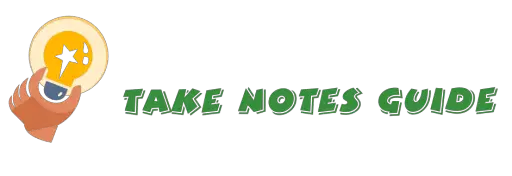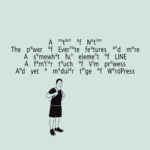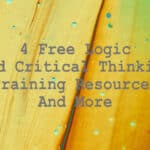
Problem-solving is one of the most important and common parts of our suffering life and it is an essential skill to learn if we hope to improve our unsatisfactory or distressing situations. I hope coming up with this post will help to alleviate some anguish you may encounter, or suggest some ways one may take notes to solve problems.
How to take notes to solve problems?
- Understand first and solve later
- Experiments with trial and errors
- Process of the elimination of possibilities
- Divide-And-Conquer for difficult problems
Problem-solving can be a science or even art in my humble opinion. A beautiful painting or chorus may inspire love and happiness to the melancholic or depressed while a correct equation can solve a mathematical challenge. Below are also some Sherlock Holmes quotes for inspirations.
Understand first and solve later
Jumping straight into problem-solving may not be the best way. Study the problem first. Why and how the problem came about? Raise questions. Once we understand enough of the situation, we know how it comes to be, making changes and improvements will be easier. In fact, it is pertinent we understand any difficult situation or problem first before we know enough how to deal with it. If we know most or all about the causes and conditions leading up to it, we may find ways to add, change or modify the critical factors for improvements.

A subtle example: We have to know and understand our own character and self. Success and failure largely or all depends on how we think, handle, and react to different matters and challenging situations.
Exercise for self:
This is perhaps the most important step one can and should take before attempting external problems: Tackle ourselves first and foremost! Are we really flawless or too arrogant to even admit otherwise? Do not let ourselves be our own worst nemesis. This may sound ridiculous, but facts can be stranger than fiction.
Answer these 2 categories of questions by writing down.
Identifying our own faults and flaws: Am I lazy? Quitter? Easily distracted? Unrealistic? Greedy and ignorant? Think highly of myself over others? Quick-tempered? Too headstrong and stubborn to listen to reasons and good advice? Refuse to admit or change my mistakes? Selfish?

Plan for self-improvement: Why should I change? What can I do to change for the better? How to work hard to improve my character? Can I plan to hold myself accountable in some ways? How long do I plan for the change? What happens if I still do not change or relapse? What are the consequences for unrepentance? What are the benefits and rewards for betterment? Can I get trusted help?
Life is short, so please do not wait till it’s too little too late before regretting our life choices. Cherish others over ourselves. Be a good person.

Be Practical
When we solve problems, we should also be feasible about it. We should know our own limits and ourselves. Are we attempting professor-level challenges when we are still far from there? Should we demonstrate existing interest or enough passion to carry on? Or are we clever in the way we can learn anything fast or is it a simple topic that suits our level?

Please note there is a difference between self-doubt and practicality. In other words, we should not be easily discouraged and yet not tackle problems far beyond us.

Experiments with trial and errors
Basically, we are taking the Thomas Edison’s light bulb invention route. It is intriguing to note that he didn’t take the 1,000 times to be failures but steps to the light-bulb invention. We should also appreciate and replicate the effort in coming up with that sheer number of steps to test, and modern-day improvements made for brighter, energy-saving, and ubiquitous lighting appliances.

I suppose one will have to frequently contemplate over a prolonged period of time to even come up with such a huge list for testing.
Question: Can we put in this kind of perseverance with effort and dedication to complete our projects and life goals?
On a personal note, I consider the light bulb one of the best inventions because it brings so much light to peoples’ life and essentially revolutionizes our nights around the world and still does.

In a modern context, programming or coding requires lots of practical experimentation after theories: From figuring out how basic commands work, specific and general troubleshooting to output layout manipulation. I remembered when I was partnered with a classmate for an assembly language programming project; I have to figure out how the logic of the program works while he has come out with the visual output of the computing results. One of the elemental keys to programming success is the ability to first tackle, ensure, and understand how the smallest radical parts work e.g. like the basic print command and how to step-through a program tracing the variable values for debugging, and then moving on to building more blocks of inter-connected codes that flow seamlessly. In programming, one of the core challenges is mathematics-oriented, so coders may have to be equipped with some algorithms solving skillset especially for renowned tech companies’ interviews. If you are preparing for this, consider learning from Project Euler and this Udemy course to Master The Coding Interview.
Process of the elimination of possibilities

Continuing with our coding example above, we have to keep testing out different possibilities to eliminate various potential problems until we reach the desired result. Naturally, we have to come out with all the possible causes for the problem (take notes if you cannot remember too many points) that we may encounter along the way, and tinker more for how to isolate and test to see if each element is the cause for the problem. The advantage of having these problems is that these help us to have a deeper understanding of the subject-matter, without which we may not know or appreciate. The more effort we spent solving a problem, the more ingrained is the memory of the experience.
This approach may also be inspired by Sherlock Holmes’ methodology of logical deduction to solve detective cases.

Divide-And-Conquer for difficult problems
Please refer to here for a more in-depth discussion on the Divide-And-Conquer method to solve problems. A good way to understand, perceive, and implement this may be through the creation of extensive notes outline like a Table-Of-Content detailing each and every part of the problem for solving before reaching the end-result or the sum of all parts. I personally hold Divide-And-Conquer in high regard as a means of understanding or solving problem. Those who do not how to handle one small problem at a time first can feel overwhelmed when handed a huge challenge and develop a habit to give up easily.
Another example: A blog post like this one can be ‘divided up’ and maybe written first with the outline including the main points in bullet list form above near the post beginning, and each point is then elaborated and expanded, and built upon sentences, paragraphs, and pictures & links before proof-reading for posting.

Gingkoapp outline structure example
Bonus Tip: Start from a blank page
Not everyone may employ the above four techniques for solving problems. Perhaps some prefer to start from a blank page and start writing or drawing away anything that comes to mind. This free-spirited approach is rather open to creativity and new ideas in my humble opinion. This may suit some types of problems more than others and similar to starting with an empty sandbox and building simple & soothing designs with minimalistic sand patterns and small rocks or plain & miniature objects.
Note-taking as a problem-solving journey
Whether we take the notes in bullet points or mind-mapping diagrams, the notes document or record our problem-solving process or journey. It would certainly be more encouraging if this process eventually solve the intended problem, however regardless of the end result, going through the process can be an important lesson itself as we learn how we approach problems ourselves, and with experience we may anticipate the obstacles and improve on our own habits and routine that works for us. We may also re-read the notes to ask ourselves if we can do better to solve the problems faster and did we solve it honorably without cheating or hurting anyone?
An example: Some people may know too well they quit too early too often, and only setting a deadline and/or having a spouse, friend or sponsor can hold them accountable and answerable for their goals. Having a dependable person as an anchor is like a kid looking up to his father or hero as a model or support. However, we should also know that a good person in this time and place is far and few, so we have to choose carefully and be aware of possible disappointments and changes for other plans.

Another example: An individual realizes he or she is easily succumbed and beset with stress, uncertainties, and self-doubt. And tends to have a desire to runaway or escape from any predicaments or dilemmas by ignoring or pushing the problematic tasks to others. A possible and simple solution might be to research into ways to deal with study or general stress, take notes that he will act on, write a serious self-note to not ever push his own problems onto others and take responsibilities for his own actions, mistakes, and failures.
Why do we take notes to solve problems?
- To help us focus
- Easier to keep track especially if it is a long list
- Notes are shorter but sufficient to remind us of the ideas
- To record or document for sharing

Side-note: Remember to take care of your health for the long run.
Conclusion

One may observe and notice that diligence or hard work plays an important role in attaining successful worldly accomplishments; Nothing beats contemplation and putting in the effort or diligence in solving any problems, regardless of painter, pianist, writer, scientist or whether we take notes or not.

The process we solve problems may vary with individuals but as long as we can arrive at the right answer in the correct way we are comfortable with, we should continue to develop our own routine and system for improvements and even sharing.

Hopefully, you have gleaned some actionable and applicable ideas to solve problems with or without taking notes, good luck & be kind to others!
Related Questions
Is there a resource that teaches how to solve problems with Post-it Notes?

There are 6 techniques and more than 70 diagrams & examples in this book: Rapid Problem Solving with Post-it Notes.






